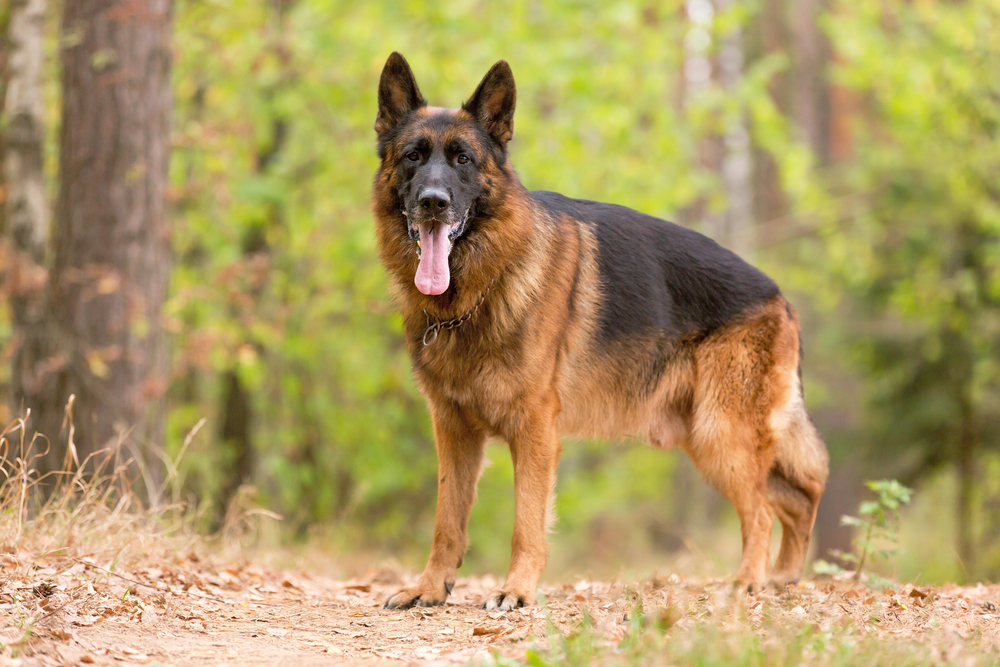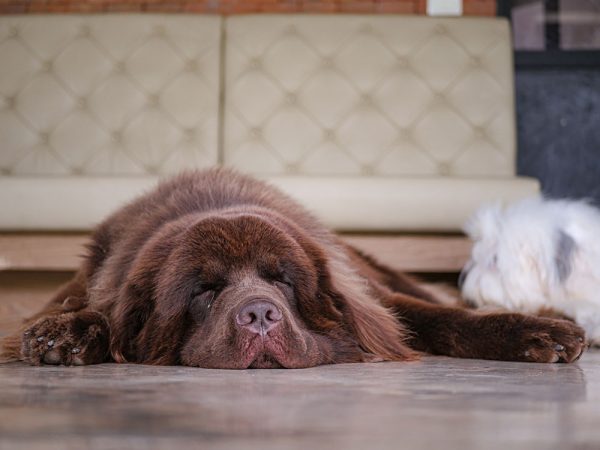Guide dogs play a vital role in the lives of their handlers. Beyond providing companionship, they give their owners the independence they need to live normal and productive lives. However, not all dog breeds make suitable guide dogs. For example, a six-pound Chihuahua is incapable of performing the duties required of pups in such roles.
Read on to find 11 of the most common guide dog breeds and discover more about what makes them good at their jobs.

How Are Guide Dog Breeds Classified?
Many different dog breeds can find work as guide dogs. However, there are specific traits that these dogs need to have to perform their job well. This includes:
- A willingness to learn
- A strong desire to please
- A quiet and calm disposition in all social settings
- A high level of intelligence
- A good memory
- Obedience on and off the lead
- Established recall response
- Good attention to detail
- The ability to stay focused
- The physical capability to lead their handler
- Easiness of upkeep (e.g., grooming)

The 11 Common Guide Dog Breeds
1. Golden Retriever

| Lifespan: | 10–12 years |
| Weight: | 55–75 pounds |
| Height: | 21–24 inches |
Golden Retrievers are naturally intelligent and alert dogs, traits necessary for a successful guide dog. They have a quick response time, a high level of obedience, and unparalleled loyalty, which further solidify their ability to do service work. Golden Retrievers have an innate need to please their owners, which comes in handy when it’s time to train them to be guide dogs.
2. Labrador Retriever

| Lifespan: | 10–12 years |
| Weight: | 55–88 pounds |
| Height: | 21–25 inches |
The Labrador Retriever has consistently been in the top five most popular dog breeds for the last few decades. In fact, they held the number one spot for 31 years, from 1991 to 20221. These energetic, friendly, and loving dogs are one of the most popular guide dog breeds. Their unbeatable work ethic is second only to their devotion to their humans. Additionally, Labs are pretty easily motivated—especially with food—so training them to do guide work is relatively simple.
3. Border Collie

| Lifespan: | 12–15 years |
| Weight: | 30–55 pounds |
| Height: | 18–22 inches |
Border Collies are generally considered the most intelligent dog breed. Though they’re traditionally used to herd sheep and other farm animals, their intelligence, adaptability, and trainability help them excel at various tasks and jobs. These dogs have infinite energy, however, and are best suited for handlers with active lifestyles.
4. Standard Poodle

| Lifespan: | 12–15 years |
| Weight: | 40–70 pounds |
| Height: | 18–24 inches |
Standard Poodles are the second most intelligent dog breed after the Border Collie. They make great guide dogs thanks to their intelligence, problem-solving skills, and adaptability. Additionally, this breed is generally easy to handle, gentle, and calm, which can make them ideal for folks wary of bigger dogs.
5. Australian Shepherd

| Lifespan: | 12–15 years |
| Weight: | 40–65 pounds |
| Height: | 18–23 inches |
Australian Shepherds are a brilliant and easy-to-train breed. These traits, their eagerness to please their owner, and their natural protective tendencies make them fantastic guide dogs. This breed thrives on human companionship and forms intense and devoted bonds with their humans. Like Border Collies, Aussies have a fair amount of energy, so they’re best for active folks.
6. Boxer

| Lifespan: | 10–12 years |
| Weight: | 55–70 pounds |
| Height: | 21–25 inches |
Boxers were initially developed to work as hunting and guard dogs, and they retain much of this loyalty and protective nature to this day. This breed’s natural attachment toward their humans, combined with their high intelligence, makes them excellent service dogs. Additionally, Boxers are pretty trainable and have immense patience, traits they can easily apply to guide dog work.
7. Airedale Terrier

| Lifespan: | 10–12 years |
| Weight: | 50–70 pounds |
| Height: | 23–24 inches |
Airedale Terriers were originally bred to be versatile hunting and farm dogs but have since found work in the police force, military, and as guide dogs. This is a confident, bold, and loyal dog breed. They’re eager, tireless, and wholly devoted to their families, all traits that can make them fantastic guide dogs. They combine the scrappy enthusiasm typically seen in terrier breeds with a larger dog’s trainability and intelligence.
8. Collie

| Lifespan: | 10–14 years |
| Weight: | 50–75 pounds |
| Height: | 22–26 inches |
Collies can make fantastic guide dogs, though they’re not used as often for this purpose as they once were. They can be very confident, focused, easy-going, and friendly. Collies may be less biddable than other common guide dog breeds, but that doesn’t mean they’re untrainable. They may just require extra work and consistency.
9. Doberman Pinscher

| Lifespan: | 10–13 years |
| Weight: | 60–100 pounds |
| Height: | 26–28 inches |
While not often thought of as guide dogs, Doberman Pinschers have been used more often recently. This is an energetic, alert, and loyal dog breed with a long history of acting as a working dog. These hardworking pups are brilliant and easily trainable. Remaining hyper-focused on their handler comes naturally to them. This powerhouse breed combines physical strength, alertness, and affection to offer their handlers a well-rounded guide dog that can learn and obey commands quickly and reliably.
10. German Shepherd

| Lifespan: | 9–13 years |
| Weight: | 49–88 pounds |
| Height: | 22–26 inches |
The German Shepherd is a working dog breed initially developed for herding sheep. These loyal and friendly dogs have been used in many other work endeavors, including search-and-rescue, police work, and, of course, serving as guide dogs. They do well in these roles as they’re very self-assured with an eagerness and willingness to learn and serve a purpose. German Shepherds can be very protective and devoted toward their humans, further adding to their suitability for guide dog work.
11. Chesapeake Bay Retriever

| Lifespan: | 10–13 years |
| Weight: | 66–88 pounds |
| Height: | 21–26 inches |
The Chesapeake Bay Retriever has the perfect disposition for a guide dog, thanks to their bright, happy, and affectionate nature. They’re not only brilliant and trainable but fantastic, loyal companions, too. These pups were initially bred as gundogs to help hunters retrieve waterfowl and pull fishing nets, so the working dog DNA coursing through their veins ensures they thrive in the role of a guide dog.
Final Thoughts
Guide dogs can cost their owners thousands of dollars to train, so it’s essential to choose the right breed for the job from the get-go. The 11 dog breeds we just learned about offer intelligence, loyalty, obedience, and a strong desire to work, making them suitable for guide work.
Featured Image Credit: Bildagentur Zoonar GmbH, Shutterstock


















